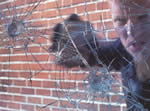| T: 0845 170 9881 | F: 0845 170 9882 | est.
1986 |
|||
cameoglass
glassfacts
historyofglass
Archaeological findings indicate that glass was first made in the Middle East, sometime in the 3000's B.C. In the beginning glass manufacturing was slow and costly. Glass melting furnaces were very small and hardly produced enough heat to melt glass properly. In ancient times, glass was a luxury item and few people could afford it.
An unknown person discovered the blowpipe in the 1st century B.C. on the Phoenician coast. Glass manufacturing flourished in the Roman empire and spread from Italy to all countries under Roman jurisdiction. Due to mass production, glass become an everyday object and was removed from the list of luxuries.
By the time of the Crusades, glass manufacture had been revived in Venice as a result of good contacts with Byzantium. Equipment was transferred to the Venetian island of Murano, where Soda Lime glass, better known as cristallo was developed. Venetian glass-blowers created some of the most delicate and graceful glass the world has ever seen. Despite their efforts to keep the technology secret, it soon spread around Europe.
After 1890, glass uses and manufacturing developments increased so rapidly as to be almost revolutionary. The science and engineering of glass as a material was much better understood, and in the late 1950's Sir Alastair Pilkington introduced a new revolutionary production method (float glass production), by which 90% of flat glass is still manufactured today.
floatglass
is a term for perfectly flat, clear glass (basic product). The term "float" glass derives from the production method, introduced in the UK by Sir Alastair Pilkington in the late 1950's, by which 90% of today's flat glass is manufactured.
production:
The raw materials (silica sand, calcium, oxide, soda and magnesium) are properly weighted and mixed and then introduced into a furnace where they are melted at 1500° C. The molten glass then flows from the glass furnace into a bath of molten tin in a continuous ribbon. The glass, which is highly viscous, and the tin, which is very fluid, do not mix and the contact surface between these two materials is perfectly flat. When it leaves the bath of molten tin the glass has cooled down sufficiently to pass to an annealing chamber called a lehr. Here it is cooled at controlled temperatures, until it is essentially at room temperature.

This is an ordinary float glass with a metallic coating to reduce solar heat. This special metallic coating also produces a mirror effect, preventing the subject from seeing through the glass. It is mainly used in façades.
production
Pyrolitic (On-Line): in this process, semi-conducted metal oxides are directly
applied to the glass during the float glass production while the glass is still
hot in the annealing lehr. These are hard coatings which are relatively harmful
to the environment.
Vacuum (magnetron)
Process (off-line):in this process one or more coats of metal oxide are applied
under a vacuum to finished glass. The coatings applied by this technique are
soft and must be protected against external influences and are therefore used
for the interior side of glass panes.
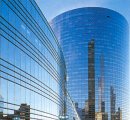
mirrorglass
Mirrors are commonly made of glass with a smooth, polished surface that forms images by the reflection of rays and light. Mirrors are exceptionally useful and practical devices and are commonly used in every area of daily life.
production
The original method of making glass mirrors consists of depositing a coating
of metal, mostly silver, on the surface of clear or body-tinted glass. A layer
of copper, which is in turn protected by a painted backing, usually protects
this deposit. The silver gives the mirror its reflective properties.
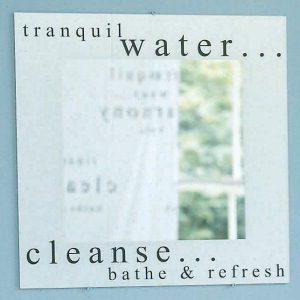
enamelled/screenprintedglass
Enamelled glass is tempered or heat-strengthened glass, one face of which is covered, either partially or totally, with mineral pigments. In addition to its decorative function, enamelled glass is also a solar ray controller. Enamelled glass is used for glazing and for cladding in facades and roofs. It can be assembled into laminated glass or glazed insulation.
production
Enamelled glass is produced by depositing special mineral pigments on the glass
surface which vitrify at the annealing or tempering temperatures. This is a
stable, non-biodegradable deposit, and can be made in one or more colours, and
in different figures (tips, letters, pads).
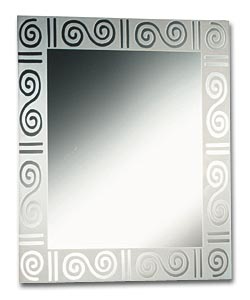
decorativeglass
Sand-blasted glass
This is produced by spraying sand at high velocities over the surface of the glass. This gives the glass a translucent surface, which is usually rougher than that obtained by etching. During sandblasting, only the areas that are to remain transparent are masked for protection. The depth and degree of the translucency of the sand-blasted finishing vary with the force and type of sand used. Sand-blasted glass can be used in numerous interior design applications in both residential and commercial settings: doors, shower screens, partitions and interior screens, furniture, etc.
acid-etchedglass
It is produced by
acid etching one side of float glass. Acid-etched glass has a distinctive, uniformly
smooth and satin-like appearance. Acid-etched glass admits light while providing
softening and vision control. It can be used in both residential and commercial
settings (doors, shower screens, furniture, wall paneling, etc.).
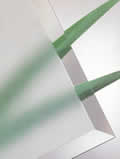
bentglass
Bent glass is a normal glass, which is curved with a special process. It can be used for external sites, such as facades, shop fronts, panoramic lifts etc. and is also commonly used for internal sites in showcases, shower doors, refrigerator cabinets etc.
production
Bent glass is produced in a horizontal mould by slowly heating the glass to
approximately 600°C, at which the glass softens sufficiently and takes the
shape of the mould. The glass is then slowly cooled to avoid any internal stress.
The mould itself plays a very important role in bent glass manufacturing because
it determines the quality and angle of the curve.
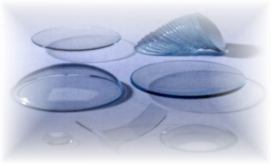
temperedglass
Tempered (toughened) glass is two or more times stronger than annealed glass. When broken, it shatters into many small fragments which prevent major injuries. This type of glass is intended for glass façades, sliding doors, building entrances, bath and shower enclosures and other uses requiring superior strength and safety properties.
production
There are two different methods used to produce tempered glass:
• Heat treating:
Where the annealed glass is subjected to a special heat-treatment in which it
is heated to about 680°C and afterwards cooled. If it is cooled rapidly,
the glass is up to four times stronger then annealed glass and its breaks into
many small fragments (fully-tempered). If it is cooled slowly, the glass is
twice as strong as annealed glass and the fragments of the broken glass are
linear and more likely to remain in the frame. 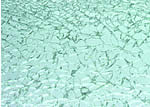
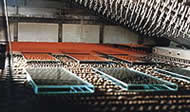
• Chemical Strengthening: The glass is covered by a chemical solution which produces a higher mechanical resistance. Chemically-strengthened glass has similar properties to thermal-treated glass. The product is not generally used for window glass, but more commonly seen in industries where thin, strong glass is needed.
laminatedglass
Laminated glass is a combination of two or more glass sheets with one or more interlayers of plastic (PVB) or resin. In case of breakage, the interlayer holds the fragments together and continues to provide resistance to the passage of persons or objects. This glass is particularly suitable where it is important to ensure the resistance of the whole sheet after breakage such as: shop-fronts, balconies, stair-railings, roof glazing.
production
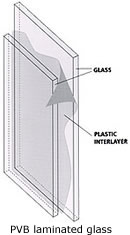 There are two types of
laminated glass: PVB and resin laminated glass:
There are two types of
laminated glass: PVB and resin laminated glass:
• PVB laminated glass is two or more sheets of glass which are bonded together with one or more layers (PVB) under heat and pressure to form a single piece.
• Resins laminated glass is manufactured by pouring liquid resin into the cavity between two sheets of glass which are held together until the resin cures.
